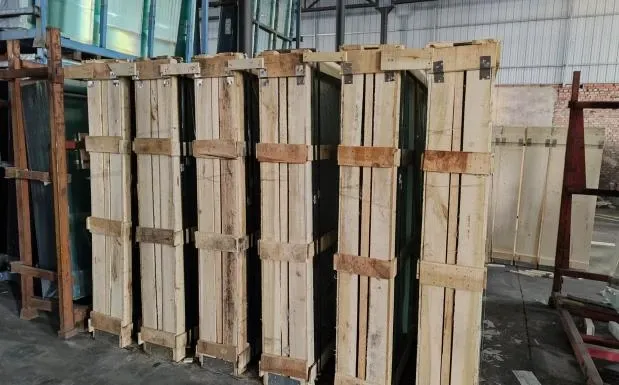10 月 . 31, 2024 16:55 Back to list
Understanding Laminated Glass and Its Applications in Modern Architecture and Safety
What is Laminated Glass?
Laminated glass is a type of safety glass that consists of two or more layers of glass sandwiched together with an interlayer of a transparent plastic material, typically polyvinyl butyral (PVB). This unique construction provides several advantages over standard glass, making laminated glass a preferred choice for various applications in both residential and commercial settings.
What is Laminated Glass?
In addition to safety, laminated glass offers improved sound insulation properties. The interlayer material helps to dampen sound waves, resulting in a quieter indoor environment. This feature makes laminated glass an excellent choice for buildings located in noisy areas, such as near highways or airports, where sound reduction can significantly enhance the quality of life for residents and occupants.
what is a laminated glass

Furthermore, laminated glass provides increased UV protection. The interlayer is effective in blocking up to 99% of harmful ultraviolet (UV) rays, which can cause fading and damage to furniture, flooring, and artwork. By using laminated glass in windows and doors, property owners can help protect their interiors from sun damage while also enjoying the benefits of natural light.
The aesthetic appeal of laminated glass should not be overlooked. It is available in a variety of colors and patterns, allowing architects and designers to create visually stunning facades and interior elements. This versatility makes laminated glass a popular choice for both modern and traditional architectural designs. Additionally, laminated glass can be customized with decorative films, enhancing its visual appeal without compromising its performance characteristics.
Laminated glass is also energy-efficient. By incorporating low-emissivity (Low-E) coatings into the laminate, this type of glass can significantly reduce heat transfer, helping to maintain comfortable indoor temperatures and reducing energy costs. This energy efficiency aligns with the growing trend towards sustainable building practices, making laminated glass an environmentally friendly option for construction projects.
In summary, laminated glass is a multifaceted material that offers a wide range of benefits, including enhanced safety, sound insulation, UV protection, aesthetic versatility, and energy efficiency. Its unique construction makes it an essential choice for various applications, from architectural design to automotive manufacturing. Given its numerous advantages, laminated glass is increasingly being recognized as a superior option for both residential and commercial use, ensuring safety and comfort while contributing to sustainable building practices. Whether for windows, doors, or decorative elements, laminated glass is a remarkable innovation in the realm of glass technology.
-
Wired Glass: A Strong and Secure Glass Solution for Various Applications
NewsNov.04,2024
-
Tinted Glass: A Stylish and Functional Choice for Modern Homes
NewsNov.04,2024
-
The Elegance and Versatility of Silver Mirrors
NewsNov.04,2024
-
The Advantages of Copper Free Mirrors
NewsNov.04,2024
-
Tempered Glass: A Reliable Choice for Modern Applications
NewsNov.04,2024
-
Pattern Glass: Stylish and Functional Glass for Modern Design
NewsNov.04,2024
Related PRODUCTS














